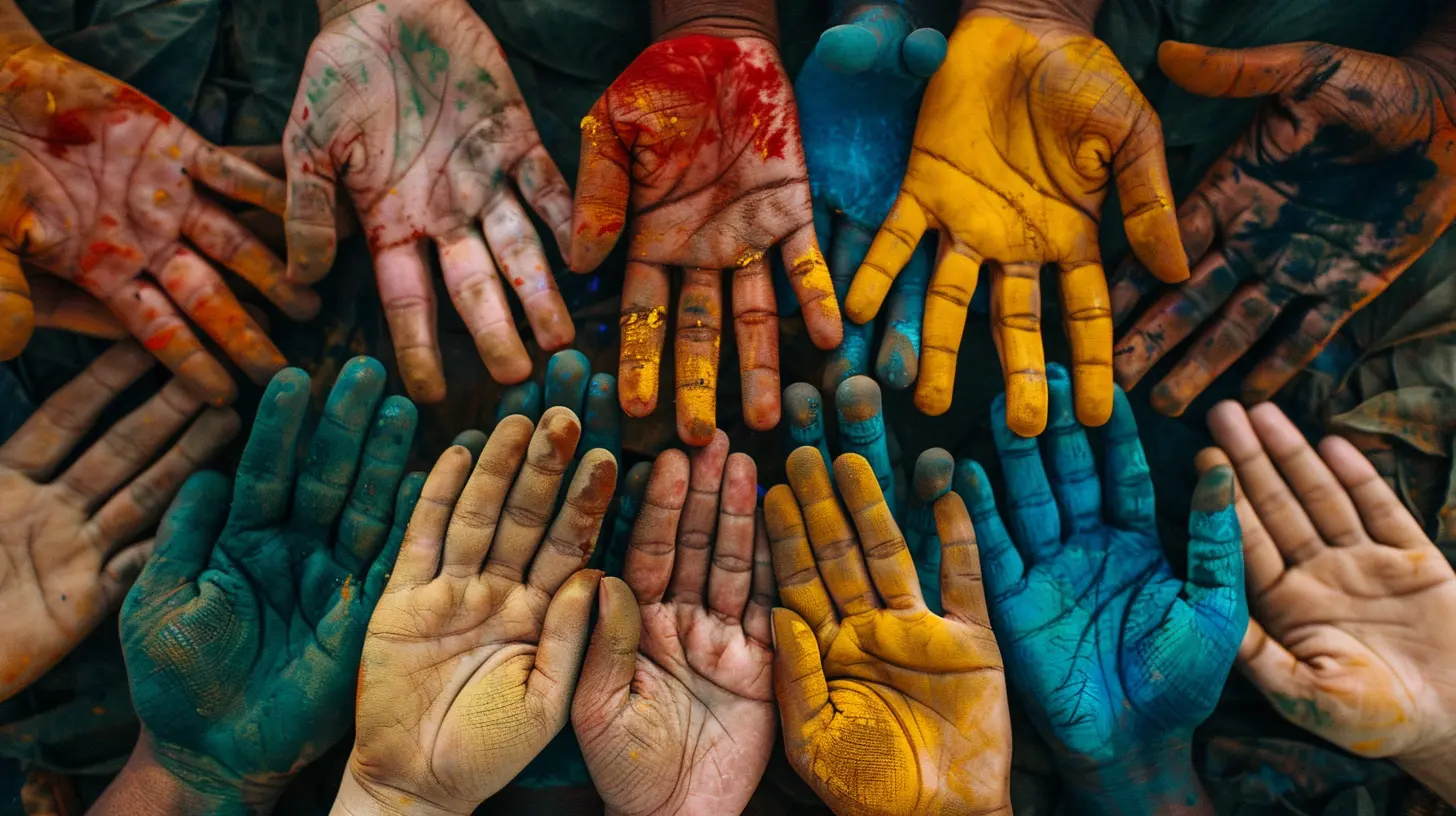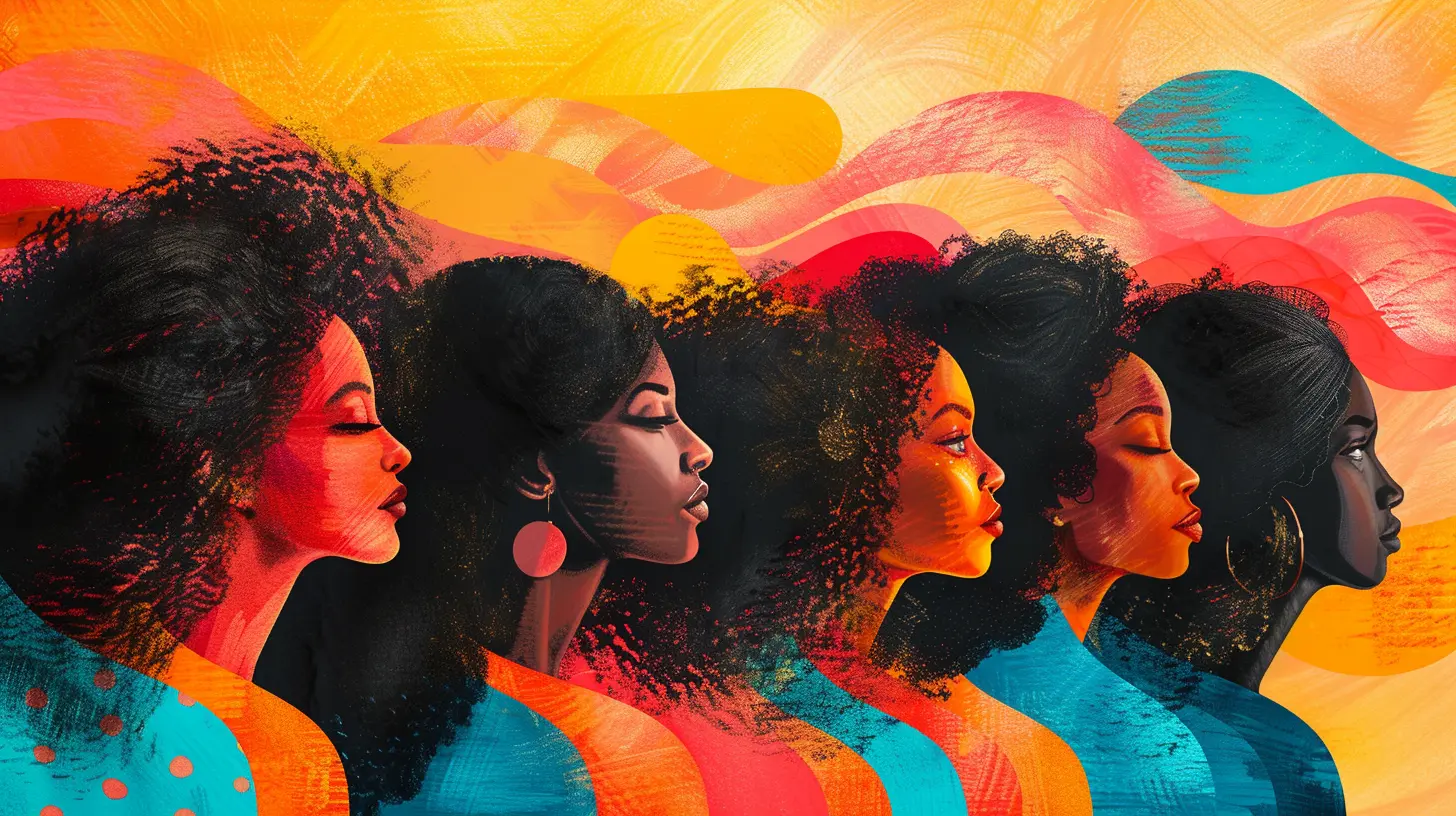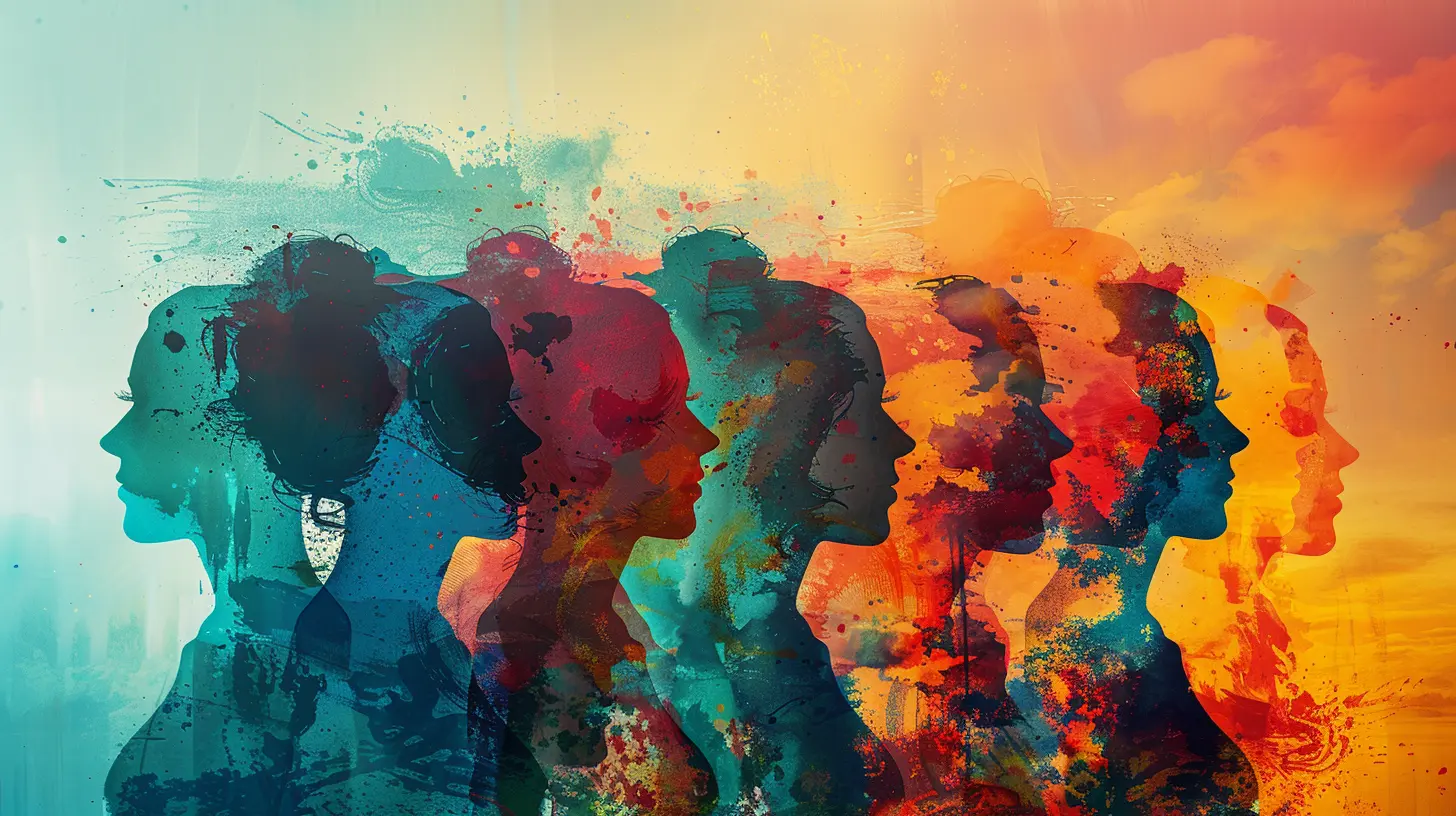Raising Awareness: Mental Health in Marginalized Communities
19 December 2024
Mental health is something we all need to care about. It doesn't matter who you are, how much money you make, or where you come from—mental health impacts every single one of us. But here's the thing: not everyone gets the same level of care or attention when it comes to mental well-being. This is especially true for marginalized communities. Whether it's due to race, ethnicity, gender identity, sexual orientation, or socioeconomic status, many people in these communities face unique challenges when it comes to mental health care.
In this article, we're going to dive into why mental health in marginalized communities is such a big deal, what barriers people face, and what we can do to create change. It’s time we stop sweeping these issues under the rug and start talking about them openly.

Why Mental Health Matters
Before we get into the specifics of marginalized communities, let’s first talk about mental health in general. Mental health affects how we think, feel, and act in our daily lives. It influences how we handle stress, relate to others, and make decisions. When mental health issues go unchecked, they can lead to serious problems, including depression, anxiety, substance abuse, or even suicide.Now, imagine dealing with all of that on top of the added pressures of being part of a marginalized group. Whether it’s facing discrimination, poverty, or lack of access to resources, people in marginalized communities often have more to juggle when it comes to maintaining mental well-being.

Who Are Marginalized Communities?
When we talk about marginalized communities, we’re referring to groups of people who are pushed to the fringes of society. These groups often lack the same opportunities, rights, and resources that others enjoy. Some examples of marginalized communities include:- Racial and ethnic minorities (e.g., Black, Indigenous, Latinx, Asian communities)
- LGBTQ+ individuals
- People with disabilities
- Immigrants and refugees
- Low-income individuals
The intersection of multiple marginalized identities can further complicate these issues. For instance, a queer person of color may face both racial and sexual orientation-based discrimination, which can compound the mental health challenges they experience.

The Mental Health Disparities in Marginalized Communities
Lack of Access to Care
One of the biggest challenges that marginalized communities face is simply getting access to mental health care. According to the American Psychological Association (APA), minorities are less likely to seek mental health services compared to their white counterparts. There are several reasons for this:- Financial Barriers: Mental health care can be expensive. Without insurance or adequate income, many people can’t afford therapy sessions or medication.
- Geographic Barriers: Many marginalized communities live in areas where mental health services are scarce. Rural areas, for example, often have fewer resources.
- Lack of Culturally Competent Care: It’s crucial for mental health professionals to understand the cultural backgrounds of their patients. Unfortunately, not all providers have the training or experience needed to offer culturally sensitive care. This can lead to misunderstandings or mistrust between patients and providers.
Stigma Around Mental Health
Let’s not forget about stigma. For many marginalized communities, there’s an added layer of shame or fear when it comes to talking about mental health. In some cultures, for example, mental illness may be viewed as a personal weakness or something that should be kept secret. As a result, people might avoid seeking help altogether.In LGBTQ+ communities, the stigma is often intertwined with experiences of discrimination and trauma. Many LGBTQ+ individuals may fear coming out to a therapist or worry that their mental health provider won’t understand their unique challenges.
Discrimination and Trauma
Many people in marginalized communities face daily discrimination and bias, whether it’s in the workplace, at school, or even when interacting with the healthcare system. These experiences can lead to chronic stress, anxiety, and even trauma.For instance, Black individuals in the U.S. are more likely to experience police brutality, which can lead to post-traumatic stress disorder (PTSD). Similarly, immigrants and refugees often deal with the trauma of leaving their home countries and facing xenophobia in their new environments.
Language Barriers
For immigrants and refugees, language can be a significant barrier when seeking mental health care. Imagine trying to explain your feelings or symptoms in a language you're not comfortable with—that’s bound to be frustrating and confusing. Moreover, many mental health resources are only available in English, further limiting access for non-English speakers.
The Impact of Mental Health Disparities
So, what happens when people in marginalized communities don’t get the mental health care they need?Increased Rates of Mental Illness
Studies have shown that marginalized groups, especially racial and ethnic minorities, have a higher risk of developing mental health conditions. For example, the U.S. Department of Health and Human Services reports that Black adults in the U.S. are 20% more likely to experience serious mental health issues, such as major depression or PTSD, than the general population.Lower Quality of Life
When mental health issues go untreated, it can severely affect a person's quality of life. People may struggle to maintain relationships, hold down a job, or even take care of themselves. This can lead to a vicious cycle where untreated mental illness worsens their social and economic situation, which in turn exacerbates their mental health problems.Suicide Rates
The suicide rates in marginalized communities can be alarming. For instance, LGBTQ+ youth are four times more likely to attempt suicide than their straight peers, according to the Trevor Project. Similarly, Indigenous populations have some of the highest suicide rates in the U.S.What Can Be Done?
Now that we’ve outlined the problem, let’s talk about solutions. There’s no one-size-fits-all answer, but there are several steps we can take to make mental health care more accessible and equitable for marginalized communities.Cultural Competency in Mental Health Care
One of the most important things we can do is improve cultural competency among mental health providers. This means training therapists, counselors, and psychiatrists to understand the unique experiences and challenges faced by marginalized communities. Culturally competent care helps build trust between providers and patients and ensures that treatment plans are tailored to the individual’s background.Expanding Access to Affordable Care
Another key step is making mental health care more affordable. This could mean expanding Medicaid or providing more funding for community mental health clinics in underserved areas. Some organizations are already working to offer low-cost or free mental health services to marginalized groups, but there’s still a long way to go.Addressing Stigma
We need to tackle the stigma surrounding mental health, especially within marginalized communities. This can be done through public awareness campaigns, education, and open conversations about mental health. The more we talk about it, the less shame people will feel about seeking help.Increasing Representation in the Mental Health Field
Representation matters. When people see therapists or counselors who look like them or share their cultural background, they may feel more comfortable seeking treatment. This is why it’s crucial to have more diversity in the mental health field, from therapists to social workers to policymakers.Peer Support Networks
Peer support can be incredibly powerful. Sometimes just talking to someone who’s been through similar experiences can make all the difference. Peer support networks, whether they’re in person or online, can provide marginalized individuals with a safe space to share their struggles and receive emotional support.Advocacy and Policy Change
Finally, we need to push for systemic change. This means advocating for policies that address the root causes of mental health disparities, such as poverty, discrimination, and lack of access to care. Grassroots organizations, nonprofits, and community leaders all have a role to play in pushing for these changes.
Conclusion
Mental health is a critical issue for everyone, but it’s especially urgent for marginalized communities. Whether it’s due to financial barriers, lack of access to culturally competent care, or the stigma surrounding mental illness, people in these communities face significant challenges when it comes to mental health. But by raising awareness and advocating for change, we can work towards creating a mental health care system that serves everyone—regardless of their background.It’s time we start breaking down the barriers and ensuring that mental health care is accessible, affordable, and stigma-free for all.
all images in this post were generated using AI tools
Category:
Mental Health AdvocacyAuthor:

Gloria McVicar
Discussion
rate this article
14 comments
Winona McKee
This is such an important topic! Raising awareness of mental health in marginalized communities can truly make a difference. Thank you for sharing!
February 3, 2025 at 5:25 PM

Gloria McVicar
Thank you for your support! Together, we can empower and uplift marginalized communities.
Elowyn Summers
Together we rise! Everyone's voice matters in mental health awareness!
January 31, 2025 at 5:18 PM

Gloria McVicar
Absolutely! Amplifying every voice is crucial in addressing mental health in marginalized communities. Together, we can create meaningful change!
Dior Powell
Thank you for shedding light on such an important issue. Raising awareness about mental health in marginalized communities is crucial. Understanding and support can empower these individuals, fostering healing and resilience. Let's continue this vital conversation together.
January 26, 2025 at 4:22 AM

Gloria McVicar
Thank you for your thoughtful response! I completely agree—continued dialogue is essential for fostering understanding and support in mental health within marginalized communities.
Rocco Horne
This article highlights the critical need for increased awareness of mental health issues in marginalized communities. By addressing stigma and advocating for accessible resources, we can foster understanding and support. It's essential to amplify these voices and ensure equitable mental health care for all, paving the way for healthier communities.
January 22, 2025 at 5:14 PM

Gloria McVicar
Thank you for highlighting this crucial issue! Increasing awareness and advocating for accessible resources are vital steps toward fostering understanding and support in marginalized communities. Together, we can pave the way for equitable mental health care.
Selena Warren
Great insights! Important conversation here!
January 20, 2025 at 5:58 AM

Gloria McVicar
Thank you! I'm glad you found the conversation valuable. Raising awareness is crucial for creating change.
Kaleb Summers
Vital insights on mental health disparities and advocacy.
January 16, 2025 at 3:53 AM

Gloria McVicar
Thank you! I'm glad you found the insights valuable—advocating for mental health equity is crucial for marginalized communities.
Cooper McGillivray
Highlighting mental health is vital; every voice deserves to be heard.
January 10, 2025 at 5:28 PM

Gloria McVicar
Thank you for your insightful comment! Amplifying every voice is essential to fostering understanding and support for mental health in marginalized communities.
Fenris Davis
This article highlights the critical importance of addressing mental health in marginalized communities. By raising awareness and promoting access to resources, we can foster understanding and support for those facing unique challenges in their mental health journeys.
January 5, 2025 at 5:53 PM

Gloria McVicar
Thank you for your insightful comment! I'm glad to see the emphasis on the importance of awareness and access to resources for mental health in marginalized communities. Your support is crucial in driving change.
Dylan McKay
Vital topic! Thank you for highlighting this issue.
December 29, 2024 at 4:53 PM

Gloria McVicar
Thank you for your support! Raising awareness is crucial for fostering understanding and change in our communities.
Kael Sharp
Thank you for shedding light on the critical issue of mental health in marginalized communities. Your article effectively highlights the unique challenges these groups face and the importance of tailored support. Raising awareness is a crucial step toward fostering understanding and improving access to mental health resources for all.
December 25, 2024 at 3:33 PM

Gloria McVicar
Thank you for your thoughtful comment! I'm glad you found the article impactful and important for raising awareness around mental health in marginalized communities.
Lysander Whitley
Together, we can elevate voices and promote mental wellness!
December 24, 2024 at 5:28 AM

Gloria McVicar
Absolutely! Unity is key in amplifying voices and fostering mental wellness in marginalized communities. Thank you for your support!
Rachael McMaster
Addressing mental health in marginalized communities is essential for equity. By amplifying voices and fostering understanding, we can create supportive environments that empower individuals to seek help and promote collective healing.
December 23, 2024 at 5:38 PM

Gloria McVicar
Thank you for your insightful comment! I completely agree—amplifying voices and fostering understanding are crucial steps toward achieving mental health equity in marginalized communities. Together, we can make a meaningful impact.
Phaedra McGill
Thank you for shedding light on such an important issue! Raising awareness about mental health in marginalized communities is crucial for fostering understanding and support. Your insights can help break stigma and encourage dialogue, ultimately leading to better resources and care for those in need. Keep up the great work!
December 23, 2024 at 4:59 AM

Gloria McVicar
Thank you for your kind words! I’m glad you found the piece valuable—together, we can make a difference in raising awareness and breaking the stigma around mental health in marginalized communities.
Elsinore Rivera
Loved this insightful piece! 🌟 It’s so important to spotlight mental health in marginalized communities. Let's keep the conversation going—because every mind matters! Together, we can break the silence and lift each other up. Cheers to awareness and support! 💚✨
December 20, 2024 at 4:38 AM

Gloria McVicar
Thank you for your support! Together, we can make a real difference in mental health awareness for marginalized communities. 💚✨
MORE POSTS

The Intersection of Trauma and Mental Illness

The Impact of Childhood Experiences on Adult Emotional Growth

How to Stay Resilient During Major Life Transitions

How to Support Someone Struggling with Mental Illness

The Role of Positive Reinforcement in Personal Motivation

Why Emotional Growth is a Lifelong Journey

Emotional Dependency and the Fear of Being Alone

The Importance of Early Diagnosis in Treating Mental Illness

The Role of Sleep in Addiction Recovery